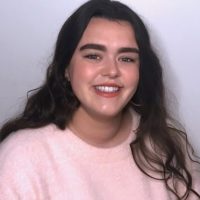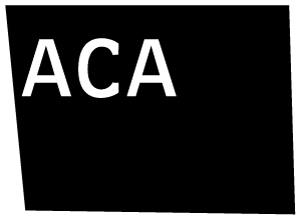
- This event has passed.
31st Annual University Student Exhibition
May 22, 2020 - July 24, 2020

Online Exhibition
We are pleased to showcase the student artists selected to participate in Atlantic Center for the Arts 31st Annual University Student Exhibition. The premiere of video will take place on May 22 at 5 PM on YouTube, please click on the following link: https://youtu.be/K3rKulyozGw
Juror: Michelle Grabner has selected the following undergraduate students.
Eli Goldstone – Florida State University, B.F.A., Studio Art 2020
Isabel O’ Carroll – Florida Atlantic University, B.F.A., Ceramics 2020
Michele Meyers – University of Central Florida, B.S., Photography 2021
COVID-19 Interruptus
The University Student Exhibition typically runs for seven weeks each summer in ACA’s Pabst Visitor Center & Gallery in New Smyrna Beach, Florida. Due to the COVID-19 pandemic, we are unable to create a gallery installation this summer. We are however, pleased to present an online video exhibition of the artists and their work. Although we are saddened by the fact that we are unable to provide the physical space this art deserves, we hope that by providing an online presence, we have created new avenues for observation, discovery, exposure and enjoyment.
Through the annual University Student Exhibition, ACA honors the outstanding work being produced by Florida’s state university art students. By identifying and promoting these emerging artists, ACA continues to focus attention on the high level of creative and experimental work being produced statewide at the college level.
The selection process for this exhibition begins from within Florida’s nine major state university art departments. Each art department is asked to nominate up to three full-time, undergraduate, degree-seeking students, working in any medium or style.
 Eli Goldstone Artist Statement:
Eli Goldstone Artist Statement:
My work examines object hood and gesture to determine what differentiates humans from tools through a series of contradictions. Firstly, the negation of being, and secondly that there is no right way of doing, Dada, conceptual art, minimalism and performance art influence my work. The work is theatrical, and engages the viewer through humor and hyperbolic situations. My multi-disciplinary practice includes experimentation through sculpture, video, performance, installation and photography. The theories of art in the everyday and object autonomy connect my body of work as a whole. The settings and objects that I use in my work are used to reference art in the everyday. Setting exists as built-environments and quotidian locations in which I perform everyday tasks. The performances overcomplicate each task, emphasizing their gestural nature. In addition to setting, I also use ordinary objects to reference art in the everyday. Using found materials I investigate the gestural uses and autonomous behaviors of these objects.
Through performative gestures, the re-contextualization of these objects begins. I disassemble, repair, rearrange, crawl and interrupt the object and space. The process is usually documented as a video, and is later installed within the object. The object is an artifact, while the video is a record of human influence. Interaction is essential in presenting each piece as more than an object on a pedestal. Using a minimalist approach, I ask the viewer to be aware of their body in relation to the work. Each piece guides the viewer to perceive these objects as extensions of the body and human gesture. As a result, the ways in which viewers are taught to do things are questioned. The process of re-contextualizing is ultimately used to question education and the act of teaching. How much of what we are taught is from personal experience versus institutionalized teaching? In conversation with South-Korean artist Kim Beom, my work challenges the often, “lopsided and controlling nature of education.” Guiding the viewer to perceive the objects as extensions of the body is part of this. As is allowing the objects license over their own autonomy.
 Isabel O’Carroll Artist Statement:
Isabel O’Carroll Artist Statement:
To date my work is focused on the physical translation of emotions, particularly death, grief, and nostalgia. I am inspired by the writings of Sylvia Plath and Virginia Woolf, and their thematic symbolism. In this way, I create objects and installations out of materials that are destined to decay. Through the utilization of materials I consider ephemeral, the work is less absolute, and lends to feelings of nostalgia. By using malleable materials like drywall, clay, and wallpaper, I create a physical interpretation of nostalgia.
Further, the theoretical framework of intersectional feminism connects and guides my research. By allowing things to become ugly, by learning new skills that would’ve been “more suited” to the stereotypical “man’s man”, (i.e. pouring concrete, welding, etc.) I am able to reject the 1950’s sexual politics that come attached to society’s view of the female artist, and adapt that definition into an all-encompassing title.
Within my practice there is a heavy reliance on experimentation, and how materials record and respond to my touch. The way I pinch, fold, and burn the clay allows for different results than when I apply the same type of making to plaster, rubber, wax, or paper. These differences are beneficial as I am able to utilize my making as a stylistic shift between aesthetics, cultivating a blurred line between the often-contradicting elements. Though there is eventually a conceptual importance to how these things turn out, the end result of this making is rarely the point, as I prefer the making to be the point within itself. When experimenting with and applying a similar process to different materials, it becomes more about the relationships I form with each material, rather than the object I inevitably end up with. A piece of that stems from my want to pick up as many skills as I can, and be viewed as an independent, capable, empowered female.
 Michele Meyers Artist Statement:
Michele Meyers Artist Statement:
We live within the confines of our own creations. Whether they are constructed with cement or gray matter, we do not discriminate but continue to navigate within these constraints; constantly dissatisfied, continuously seeking solace or never venturing from a tepid existence. From a vantage point above my subjects, I peer into their oblivion and watch the play unfold within its periphery, bound by stage, set and the actors’ lines.
Michelle Grabner Juror’s Statement (March 30, 2020)
My selection of only three artists was difficult albeit intentional. It would have been an easier task if I was to select several more artists or to curate an exhibition of works culled from all of the meritorious submissions. However, I elected to limit my selection to just three artists: Eli Goldstone, Isabel O’Carroll and Michele Meyers so that they may have the opportunity to represent their ideas and their practice in a broader context and with an ample sum of work. Since the future for emerging artists is seeded with copious group exhibitions and non-specific juried opportunities where applicants are represented solely by a single work, I am hoping that the distinction of presenting a richer offering with fewer artists will provide a learning experience into the impact of display and curation. Needless to say, it is a great honor for an artist to have work on view at Atlantic Center for the Arts Pabst Visitor Center and Gallery. ACA’s audience are perennially curious and keenly invested in contemporary art and its impact on cultural. I am confident that Eli Goldstone’s critical illusionary effects combined with Isabel O’Carroll’s material investigations and Michele Meyers’s pictorial narratives will enrich the ACA community and offer in-depth insight into the concerns expressed by these three skillful emerging artists.
This exhibition is generously sponsored by Ed and Jeanie Harris.
